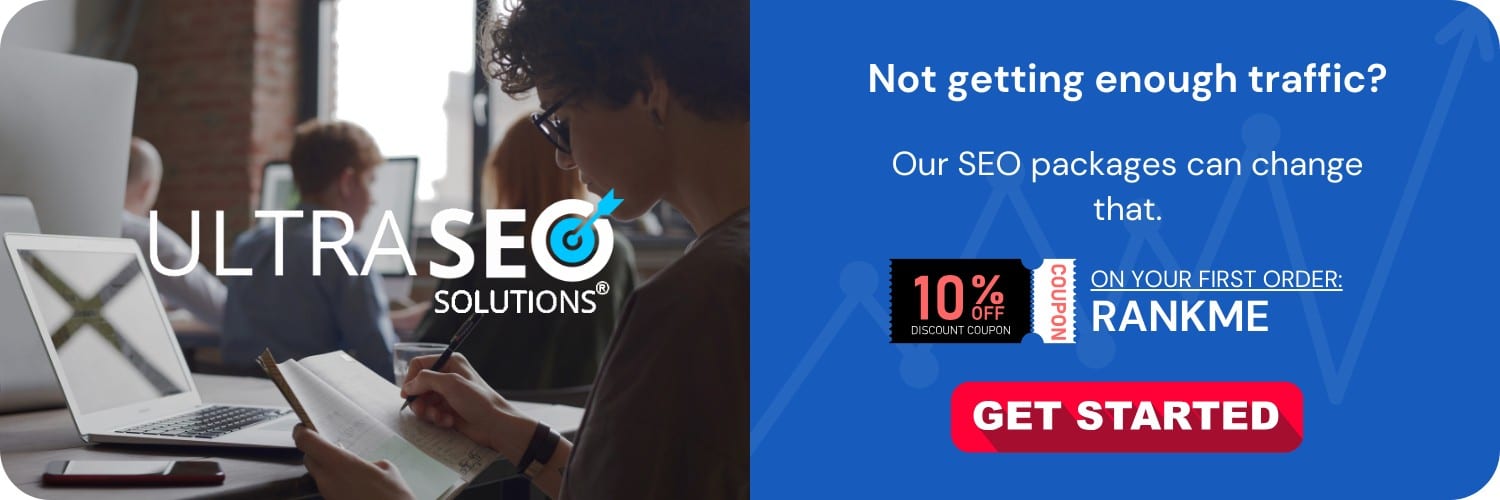
SEO for environmental organizations necessitates a strategic approach that leverages unique content, user engagement, and technical optimization to enhance their online footprint and promote their environmental mission. Some of the best SEO tips for these organizations include crafting high-quality, relevant content; optimizing for local search; engaging in link-building with reputable sites; and ensuring their website is mobile-friendly, fast, and secure.
Understanding the Importance of SEO for Environmental Organizations
SEO, or Search Engine Optimization, is the practice of optimizing a website so it ranks higher in search engine results pages (SERPs) for relevant queries. This is critical for environmental organizations because higher visibility in search results can lead to increased awareness, more engaged supporters, and potentially more donations.
Best SEO Practices for Environmental Organizations
1. Keyword Research and Targeting
The foundation of a solid SEO strategy begins with keyword research. Identifying the terms and phrases that your target audience is searching for allows you to create content that is relevant and valuable to them.
- Use keyword research tools to discover what your audience is interested in.
- Analyze your competitors to see which keywords they are ranking for.
- Focus on long-tail keywords, which are less competitive and more specific to your niche.
2. Producing High-Quality Content
Content is king in the world of SEO. Environmental organizations should focus on creating informative and engaging content that resonates with their audience.
- Develop blog posts, articles, and guides about environmental issues and practices.
- Utilize visuals such as images, infographics, and videos to enhance user experience.
- Keep content up-to-date with the latest environmental news and research.
3. On-Page Optimization
On-page optimization involves optimizing individual web pages to rank higher and earn more relevant traffic in search engines.
- Include targeted keywords in your title tags, meta descriptions, headings, and throughout the content wherever it fits naturally.
- Optimize your images with descriptive, keyword-rich file names and alt text.
- Ensure your URLs are concise and descriptive, using hyphens to separate words.
4. Local SEO
For environmental organizations that operate locally or host local events, local SEO is crucial.
- Claim your Google My Business listing and keep your organization’s information up-to-date.
- Encourage satisfied supporters and volunteers to leave reviews.
- Build local citations by ensuring your organization is listed in local directories and on review sites.
5. Link Building
Backlinks from reputable sites signal to search engines that your content is valuable, which can boost your rankings.
- Network with environmental bloggers, news websites, and partners to earn backlinks.
- Create link-worthy content such as original research, infographics, or compelling stories about your efforts.
- Participate in community events and sponsorships that may result in online press coverage.
6. Enhancing User Experience
A website that delivers a great user experience is more likely to retain visitors and perform well in search engine rankings.
- Ensure your website has a clean, simple design that facilitates easy navigation.
- Improve page loading times by optimizing images and using a reliable hosting service.
- Ensure your website is accessible to people with disabilities, following WCAG guidelines.
7. Mobile Optimization
With the majority of Internet users accessing the web via mobile devices, having a mobile-friendly website is non-negotiable.
- Use responsive design to ensure your site looks good on any screen size.
- Test your website on various devices and browsers to ensure compatibility.
- Keep mobile navigation simple and thumb-friendly.
8. Social Media Integration
Social media can play a significant role in SEO by driving traffic to your website and increasing your organization’s online visibility.
- Share your content on social media platforms where your audience is active.
- Engage with your followers by replying to comments and messages.
- Use relevant hashtags to increase the discoverability of your posts.
9. Performance and Security
Search engines favor websites that are fast and secure.
- Utilize CDN services and caching to improve your website’s performance.
- Regularly update your CMS and plugins to fix any vulnerabilities.
- Implement HTTPS to secure data transmission between your website and your users.
Advanced SEO Techniques for Environmental Organizations
Once you’ve mastered the basics, consider these advanced strategies to further enhance your SEO efforts.
Structured Data Markup
Structured data markup helps search engines better understand the content on your website, which can improve the way your pages are represented in SERPs.
- Use schema.org to mark up events, news articles, and organizational information.
- Test your structured data implementation with Google’s Rich Results Test tool.
Content Pruning and Updating
Regularly review your content to remove any outdated or low-performing pieces and update others to be current and relevant.
- Audit your content periodically to identify pieces that need refreshing.
- Consolidate posts on similar topics to create comprehensive resources.
Topic Clusters and Content Silos
Organizing your content into topic clusters can help establish your site’s authority on environmental subjects.
- Create pillar pages that provide an overview of a core topic.
- Link to related content within your website to build a silo structure that reinforces topic relevance.
User Intent Optimization
Understanding why users are searching for certain topics can guide your content creation to more effectively meet their needs.
- Analyze search intent by looking at the types of pages (informational, commercial, navigational, transactional) that are ranking for your target keywords.
- Tailor your content to align with the user’s stage in the journey—awareness, consideration, decision.
Finishing Thoughts
SEO plays an integral role in amplifying the message of environmental organizations. By leveraging these tips and continually evolving your strategy to keep in line with best practices and algorithm changes, you can ensure your organization stays visible and influential in the digital space. It’s not only about driving traffic, but also about cultivating a community of informed, engaged, and active supporters who share your commitment to making a positive environmental impact. Remember, SEO is not a one-time task but an ongoing process that requires attention, adaptability, and a deep understanding of your audience. By focusing on these elements, your organization can continue to grow its online presence and drive meaningful change in the world.“`html
Frequently Asked Questions
Why is SEO important for environmental organizations?
SEO (Search Engine Optimization) is crucial for environmental organizations because it helps them improve their online visibility, reach a wider audience, and effectively spread their message. By optimizing their website and content for search engines, these organizations can attract more traffic, engage the public, and encourage more people to support their cause, whether through donations, volunteer work, or advocacy.
What are some basic SEO strategies environmental organizations should use?
Some basic SEO strategies include keyword research to understand what terms your audience is searching for, on-page SEO which involves optimizing headings, content, images, and URLs, and off-page SEO to build a network of backlinks. Also, ensuring the website is mobile-friendly and has a fast loading time is key to retaining visitors.
How can environmental organizations perform effective keyword research?
Environmental organizations can perform effective keyword research by using tools such as Google’s Keyword Planner or other third-party SEO tools. They should focus on keywords relevant to their cause, location-based keywords, and long-tail keywords that offer less competition. Analyzing keywords used by similar organizations and monitoring trending topics in the environmental sector can also inform keyword strategy.
What are some on-page SEO tips specifically for environmental organizations?
On-page SEO tips for environmental organizations include using relevant keywords naturally in their content, optimizing title tags and meta descriptions with compelling and keyword-rich text, structuring content with proper header tags for readability, and including alt text for images that describe what the image is about using relevant keywords.
Can blogging help with SEO for environmental organizations?
Yes, blogging can significantly enhance SEO for environmental organizations. By consistently publishing high-quality, informative, and keyword-targeted content, these organizations can establish authority, attract backlinks, and increase their visibility in search engine results. Blog posts that answer common questions, discuss recent environmental issues, or provide educational content are particularly effective.
Why is mobile optimization important for environmental organizations?
Mobile optimization is important because a rapidly growing number of users access the internet through mobile devices. With Google’s mobile-first indexing, it’s essential for websites to display and function correctly on smartphones and tablets to rank well. Environmental organizations must ensure their websites are responsive and provide a good user experience on mobile devices.
How can backlinks improve an environmental organization’s SEO?
Backlinks, which are links from other websites to your site, can significantly improve SEO by establishing credibility and authority. Search engines view these links as endorsements, which can boost an organization’s ranking. Environmental organizations can acquire quality backlinks by engaging with relevant communities, collaborating with influencers, participating in forums, and creating shareable content.
What role does social media play in SEO for environmental organizations?
While social media links do not directly contribute to SEO rankings, a strong social media presence can lead to greater content distribution, which may result in increased website traffic and backlinks. Environmental organizations should use social media platforms to share their content, interact with their audience, and amplify their message.
Is it important for environmental organizations to implement local SEO?
Yes, local SEO is particularly important for environmental organizations to target their efforts in specific regions or communities. This can be achieved by listing the organization in local directories, optimizing for local keywords, and ensuring accurate local business information on Google My Business and other relevant platforms.
How can website analytics help in improving an environmental organization’s SEO?
Website analytics tools, like Google Analytics, help organizations track their website’s performance, understand their audience’s behavior, and identify pages that may not be performing well. By analyzing this data, environmental organizations can make informed decisions to optimize their website content, structure, and marketing strategies to improve search engine visibility and reach their target audience effectively.
“`






